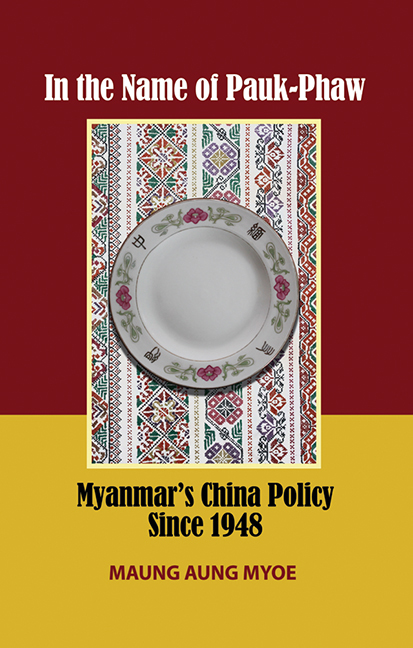Book contents
- Frontmatter
- Dedication
- Contents
- About the Cover
- Acknowledgements
- Chinese Names
- 1 Introduction
- 2 Sino-Myanmar Relations 1948–1962: The Years of Charting the Water
- 3 Sino-Myanmar Relations 1962–1988: Into the Years of Living Dangerously
- 4 Sino-Myanmar Relations 1988–2010: Towards Closer Cooperation
- 5 Conclusion
- Appendices
- Appendix I
- Appendix II
- Bibliography
- Index
- About the Author
Appendix I
from Appendices
Published online by Cambridge University Press: 21 October 2015
- Frontmatter
- Dedication
- Contents
- About the Cover
- Acknowledgements
- Chinese Names
- 1 Introduction
- 2 Sino-Myanmar Relations 1948–1962: The Years of Charting the Water
- 3 Sino-Myanmar Relations 1962–1988: Into the Years of Living Dangerously
- 4 Sino-Myanmar Relations 1988–2010: Towards Closer Cooperation
- 5 Conclusion
- Appendices
- Appendix I
- Appendix II
- Bibliography
- Index
- About the Author
Summary
SINO-BURMESE AGREEMENT ON BOUNDARY QUESTION
28 January 1960
The Government of the People's Republic of China and the Government of the Union of Burma,
With a view to promoting an overall settlement of the Sino-Burmese boundary question and to consolidating and further developing friendly relations between China and Burma,
Have agreed to conclude the present Agreement under the guidance of the Five Principles of peaceful co-existence and have agreed as follows:-
Article I
The Contracting Parties agree to set up immediately a joint committee composed of an equal number of delegates from each side and charge it, in accordance with the provisions of the present Agreement, to discuss and work out solutions on the concrete questions regarding the Sino-Burmese boundary enumerated in Article II of the present Agreement, conduct surveys of the boundary and set up boundary markers, and draft a Sino-Burmese boundary treaty, The joint committee shall hold regular meetings in the capitals of the two countries or at any other places in the two countries.
Article II
The Contracting Parties agree that the existing issues concerning the Sino-Burmese boundary shall be settled in accordance with the following provisions:
(1) With the exception of the area of Hpimaw, Gawlum and Kangfang, the entire undelimited boundary from the high conical peak to the western extremity of the Sino-Burmese boundary shall be delimited along the traditional customary line, that is to say, from the high conical peak northward along the watershed between the Taiping, the Shweli, the Nu (Salween) and the Tulung (Taron) Rivers on the one hand and the Nmai Hka River on the other, up to the place where it crosses the Tulung (Taron) River between Chingdam and Nhkumkang, and then along the watershed between the Tulung (Taron) and the Tsayul (Zayul) Rivers on the one hand and all the upper tributaries of the Irrawaddy River, except for the Tulung (Taron) River, on the other, up to the western extremity of the Sino-Burmese boundary. The joint committee shall send out joint survey teams composed of an equal number of persons from each side to conduct surveys along the above mentioned watersheds so as to determine the specific alignment of this section of the boundary line and to set up boundary markers.
- Type
- Chapter
- Information
- In the Name of Pauk-PhawMyanmar's China Policy Since 1948, pp. 193 - 209Publisher: ISEAS–Yusof Ishak InstitutePrint publication year: 2011

